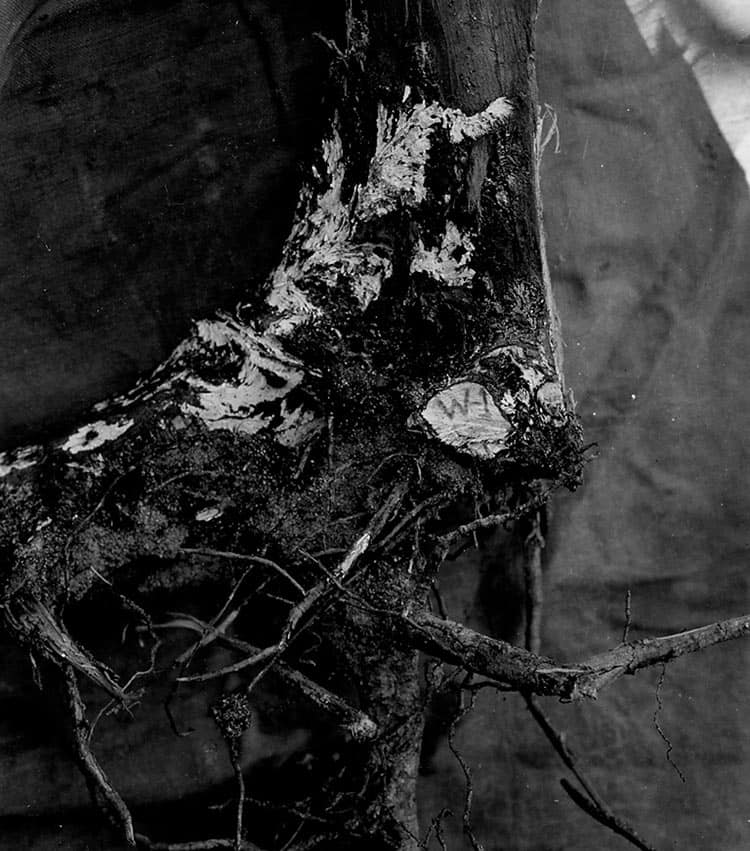Armillaria is a parasitic fungi that lives on the trees and woody shrubs, in small dense clumps or tufts. The muschroom tops are usually yellow-brown, with a sticky touch when moist.
Armillaria
Biology
Armillaria species have an unusual nuclear cycle that is not yet completely understood. They differ from other basidiomycota in that after mating they are predominately diploid rather than heterokaryotic. Amrillari spreads from living trees, dead and live roots and stumps through their root like structures at the rate of approximately 1 meter a year.
Damage
Armillaria is a destructive pathogen in that it causes "white rot" root disease. Armillaria is a facultative saprophyte, feeding on dead plant mateial which allows it to kill its hosts. This is different to a parasite which must moderate their growth to avoid host death.. An infected tree will die once the fungus has caused significant root damage. Symptoms include shortage of leave in spring and mushrooms grow in clusters from the infected plant.


